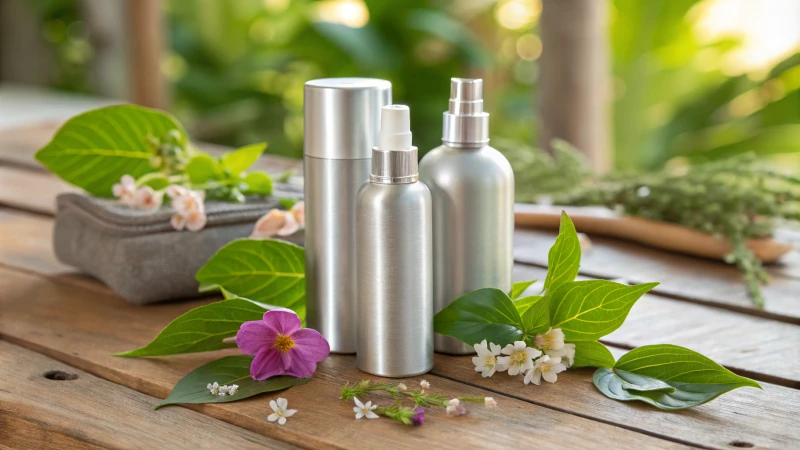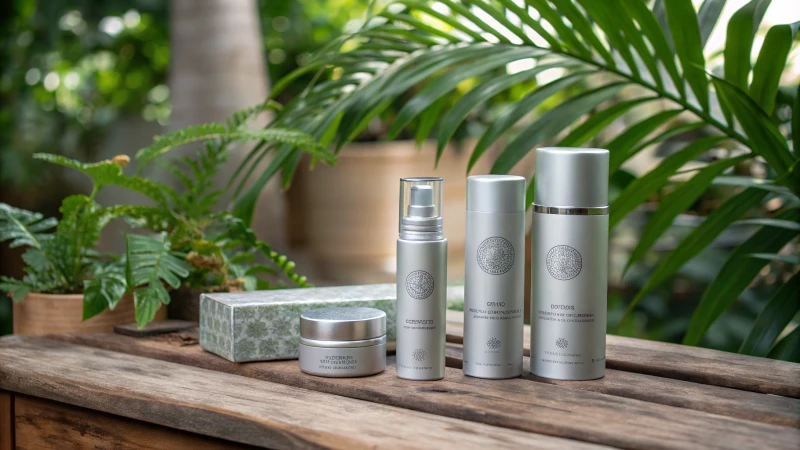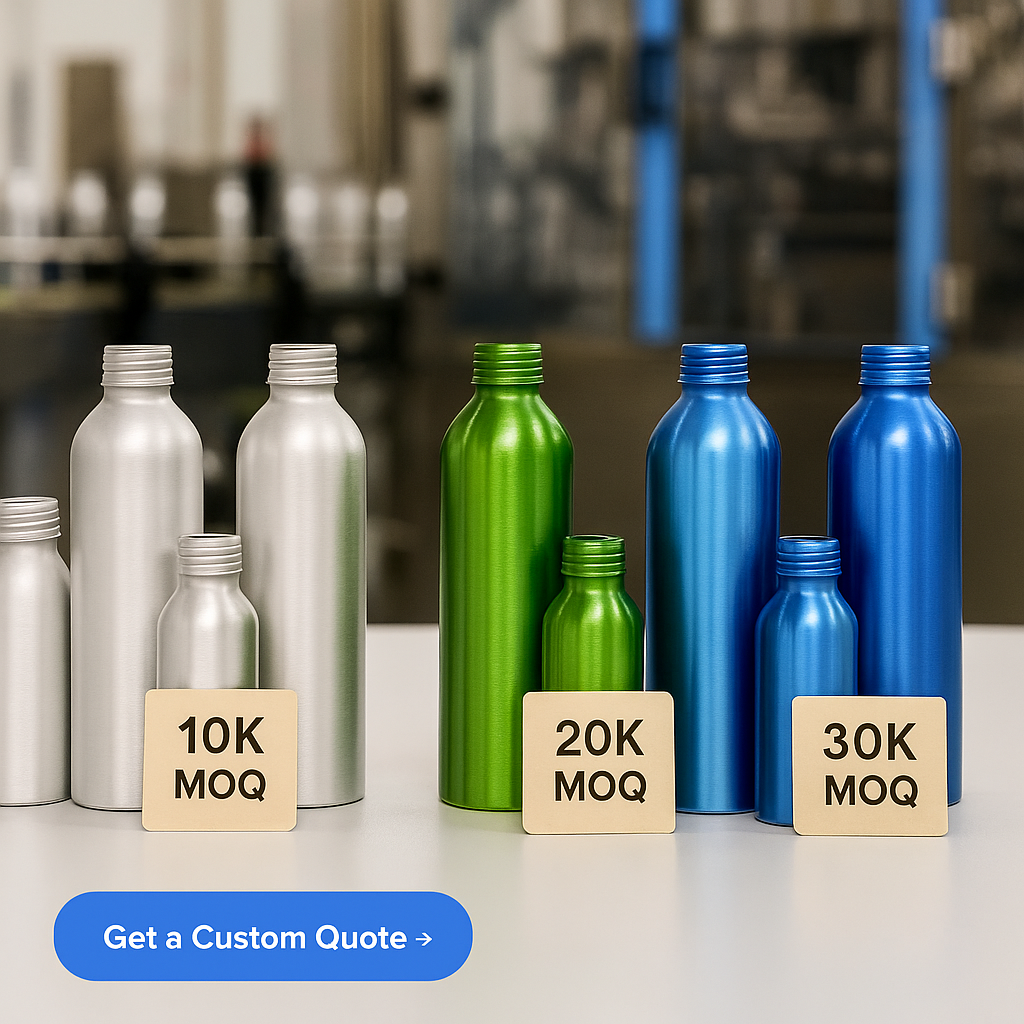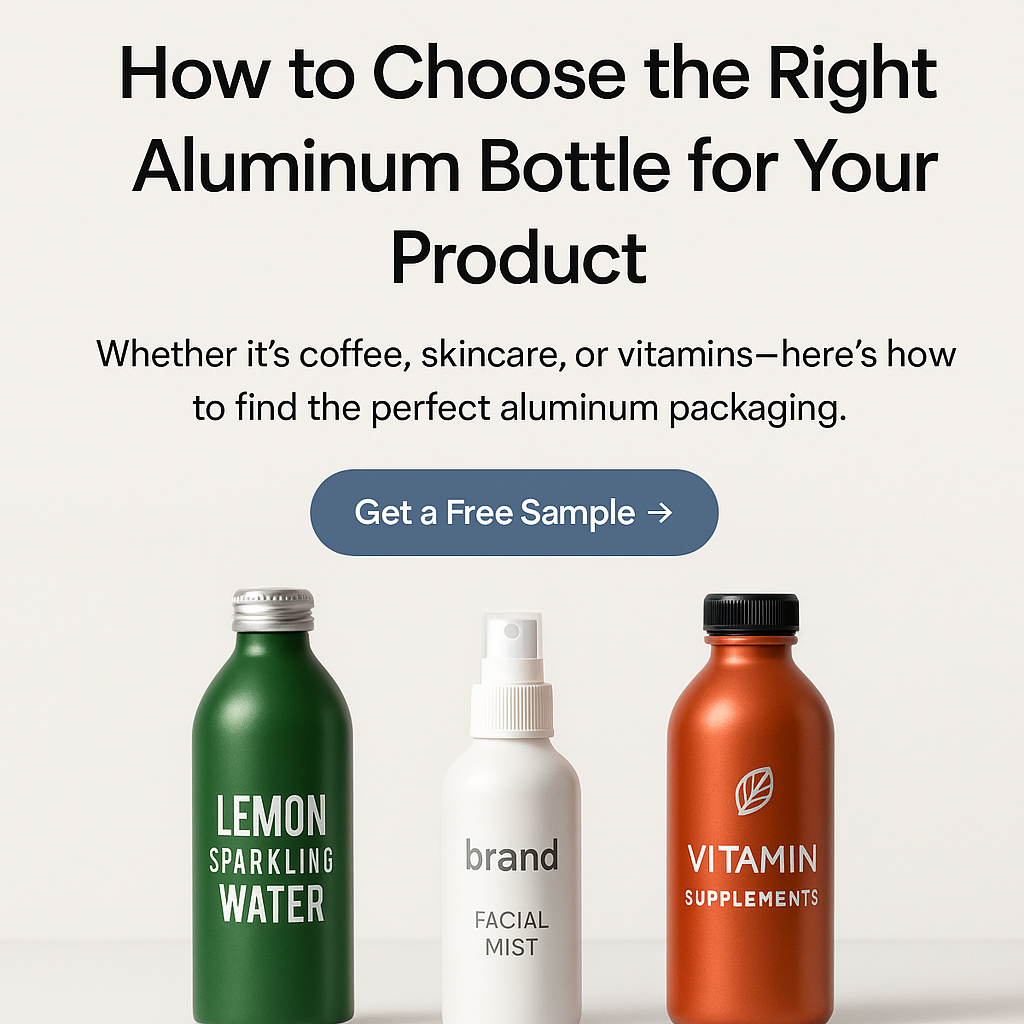
Have you ever thought about how your favorite beauty products are becoming more eco-friendly? Aluminum bottles are probably the eco-friendly heroes we've been waiting for.
Aluminum bottles are changing sustainable packaging in the beauty world. Aluminum is highly recyclable and good for the environment. Plastic cannot be recycled endlessly. Aluminum can be recycled again and again without losing quality. This quality makes aluminum a top choice. Many eco-friendly brands choose it. These brands want to reduce their carbon footprint.
The shift to aluminum represents more than a trend. This is a true movement toward a greener future. I remember learning about aluminum's endless recyclability. It felt like finding hidden treasure. Aluminum reduces waste significantly. It also creates a lasting impact on our planet. This incredible material is reshaping the beauty industry. Every bottle contributes to this transformation.
Aluminum bottles are infinitely recyclable.True
Aluminum can be recycled repeatedly without losing quality.
Plastic bottles are more recyclable than aluminum.False
Plastic degrades in quality with recycling, unlike aluminum.
Why Are Aluminum Bottles More Sustainable Than Plastic and Glass?
I still remember the day I chose aluminum bottles for my products. That decision was not only about the sleek appearance. It was also about creating a real change for our planet. A very genuine difference.
Aluminum bottles are more sustainable than plastic and glass. People recycle them endlessly without losing quality. Aluminum production requires less energy. It has a smaller environmental impact. This is very important.

Recyclability: An Endless Cycle
A surprising moment for me was learning that aluminum can get recycled endlessly. Unlike plastic, which weakens each time it gets recycled, aluminum keeps its strength forever. Imagine every product being so strong! Glass can also be recycled but requires much more energy to reform.
| Material | Recyclability | Energy Usage |
|---|---|---|
| Aluminum | Infinite | Low |
| Plastic | Limited | Moderate |
| Glass | Moderate | High |
This fact hit me hard, showing the energy differences1 and proved why choosing aluminum is a smart path for sustainability.
Energy Usage and Creation
I’ve long been curious about how products get produced. Discovering that aluminum bottles need less energy than glass was a hidden gem. Aluminum melts at lower temperatures than glass, so it requires less energy from beginning to end. Plastic may be cheaper at first, but its long-term environmental harm makes it much less attractive.
- Aluminum: Lower melting point saves energy.
- Plastic: Slow breakdown causes lasting damage.
- Glass: Needs a lot of energy for melting and forming.
Environmental Impact and Durability
Aluminum is very light, which lowers its carbon footprint during transport. In large-scale logistics, each ounce counts. The lifecycle assessment shows aluminum reduces transport energy2, which is great for our green goals.
Picture using one bottle again and again without losing quality - aluminum allows this! Plastic often ends in landfills after a few uses, while aluminum remains useful for years.
Consumer Views and Market Shifts
I noticed people are choosing eco-friendly options more. My team and I decided to use aluminum packaging. This choice met market needs and matched our eco-friendly vision. Customers see aluminum as a sign we're responsible with resources.
Switching to aluminum packaging unlocked new chances and partnerships for us. For businesses like mine, the goal isn’t just fixing small problems; it’s setting a high standard for sustainability. Embracing this trend might guide future innovations.
Aluminum bottles have infinite recyclability.True
Aluminum maintains quality through infinite recycling cycles, unlike plastic.
Glass bottles require less energy to produce than aluminum.False
Glass needs more energy due to a higher melting point than aluminum.
How Does Aluminum Packaging Transform Beauty Brands?
Ever wondered how the simple aluminum can shakes up the beauty world?
Aluminum packaging helps beauty brands by being eco-friendly, durable and stylish. It protects products. This type of packaging matches sustainability goals. It attracts eco-conscious consumers. This approach increases brand value and market appeal.

The Eco-Friendly Edge
I remember when I realized how much waste single-use plastics produced. It was a real awakening for me and many in the beauty industry. That's when I started looking for alternatives and found aluminum packaging3. Aluminum stands as a true hero of recycling - it's recyclable without any limits! This means less waste filling up landfills and a huge saving of natural resources. For brands like mine, meeting sustainability goals4 isn't just about looking good; it's about truly caring for the planet.
| Benefit | Description |
|---|---|
| Recyclability | Aluminum can be recycled indefinitely without loss of quality. |
| Energy Efficiency | Recycling aluminum saves 95% of the energy required to produce new aluminum. |
Enhanced Product Protection
I have always cared deeply about product quality - there's no room for error. In my early days, product leakage caused big problems until I changed to aluminum. The durability5 of aluminum provides a strong barrier against light, air, and moisture. This is vital for keeping sensitive beauty products safe, like organic cosmetics and serums.
- Barrier Properties: Aluminum stops oxidation and keeps products clean.
- Leakage Prevention: Its tough structure reduces leakage risks.
Boosting Brand Image
Let's be truthful, everybody likes a bit of glamour. Aluminum packaging offers a sleek, modern appearance that enhances a brand's aesthetic appeal. I could customize it endlessly with different finishes and printing techniques. This versatility let me create products that looked high-end and expressed our dedication to quality and innovation.
- Customizability: Brands use embossing, anodizing, and digital printing.
- Premium Appeal: Metallic shine gives products a very luxurious touch.
The market appeal6 of aluminum packaging goes beyond just looks. It's about standing out in the competitive beauty industry by showing that we think ahead and care about the environment. Embracing aluminum packaging7 was a strategic decision for my brand. It helped us stand out while positively impacting environmental conservation efforts.
| Feature | Impact |
|---|---|
| Visual Appeal | Elevates product perception and consumer interest. |
| Brand Differentiation | Positions the brand as forward-thinking and sustainable. |
Aluminum packaging is infinitely recyclable.True
Aluminum can be recycled indefinitely without losing its quality.
Aluminum packaging increases landfill waste.False
Recycling aluminum reduces landfill waste by reusing the material.
Are Consumers Willing to Pay More for Eco-Friendly Packaging?
Do you ever think about whether people would really pay more for eco-friendly packaging?
Most people, especially the younger crowd, are willing to pay extra for eco-friendly packaging. Cost plays a significant role in their decision. Perceived value also heavily influences their choice. Brand trust is very important. These factors decide how much more they choose to spend.

Understanding Consumer Motivation
I remember realizing how much waste simple, everyday packaging creates. Environmental issues now concern many of us, especially Millennials and Gen Z. This concern drives us towards greener choices. We feel responsible for sustainability8. This change in thinking pushes brands to rethink their product packaging.
Factors Influencing Willingness
| Factor | Influence on Willingness |
|---|---|
| Cost vs. Value | Higher perceived value increases willingness despite higher costs. |
| Brand Trust | Trusted brands may find consumers more willing to pay a premium. |
| Demographic Preferences | Younger demographics prioritize sustainability as vital, not optional. |
Cost vs. Value
In a store, I compared two similar products. One had sustainable packaging, the other did not. The eco-friendly option cost more; however, I thought about long-term benefits. Many people see eco-friendly packaging as more valuable. Eco-conscious shoppers9 tend to evaluate the long-term benefits over immediate cost savings. For some, ethical satisfaction can outweigh the higher price.
Brand Trust and Transparency
Buying from transparent brands feels comforting. When companies share their sustainability efforts openly, they earn trust. Brands that are transparent about their sustainability efforts tend to build stronger trust with their customers. This trust can significantly influence consumer willingness to pay more. Companies showcasing their environmental initiatives through clear labeling and authentic storytelling10 often enjoy better customer loyalty.
Demographic Preferences
Studies find that younger people prefer paying more for eco-friendly products compared to older generations. For them, sustainability is not just an add-on; it is part of the product experience—viewed as vital rather than optional.
Overall, interest in sustainable packaging grows, but willingness to pay more varies among consumers across different segments and is influenced by multiple factors. Businesses really need to balance eco-friendly solutions properly without alienating cost-sensitive customers.
Millennials prioritize sustainability in purchases.True
Millennials and Gen Z show increased responsibility towards sustainability.
Older generations pay more for eco-friendly packaging.False
Younger demographics are more likely to pay extra for eco-friendly options.
What Are the Challenges in Adopting Aluminum Bottles in the Beauty Industry?
Do you ever wonder why aluminum bottles are not used more often in beauty products?
Aluminum bottles in the beauty industry come with challenges. Costs are often higher. There might be issues with product compatibility. Design can have limits. Consumer perceptions may vary. These obstacles are crucial to overcome. A smooth transition to more sustainable packaging is very important.

Cost Concerns
The first challenge? Cost. Aluminum bottles cost a lot to produce. It's like choosing gourmet coffee instead of regular - it tastes amazing but feels expensive. For a brand, this means changing prices or profit margins. It's important to consider.
| Material | Average Cost | Durability |
|---|---|---|
| Plastic | Lower | Moderate |
| Aluminum | Higher | High |
Compatibility with Product Formulas
Next was product formula compatibility. Aluminum might react with some ingredients and change their power. Imagine spending months on a perfect face cream, only for the package to ruin it! Creating liners that don't react really transformed our approach.
Developing non-reactive liners can help mitigate these issues.
Design Limitations
Design limitations followed. Beautiful packaging is powerful, but aluminum's stiffness posed a challenge. It's like painting on a bumpy wall - the idea is clear, but carrying it out needs creativity.
Innovations in printing technology are needed to offer diverse and appealing designs.
Consumer Perception
Consumer perception could be tricky. Some people still think metal packaging means lower quality. Telling consumers about aluminum's eco-friendly benefits became vital.
Educating consumers on the environmental benefits of aluminum can shift perceptions and increase acceptance, similar to introducing an old buddy at a gathering - people warm up once they see the positives.
Sustainability Expectations
Aluminum is recyclable, yet the recycling process isn't completely green and uses much energy. Understanding its life cycle and sharing the benefits helped connect our brand with environmentally minded buyers.
Further exploration into consumer education strategies11 can provide insights into how to effectively promote the advantages of using aluminum bottles.
Looking back, challenges became chances to innovate and grow. Overcoming these complexities brought us closer to our green goals. It also strengthened our connection with customers who share our vision for a very eco-friendly future. That drives us, one bottle at a time.
Aluminum bottles cost more than plastic ones.True
Aluminum is generally more expensive, impacting profit margins.
All beauty products are compatible with aluminum packaging.False
Some products react with aluminum, affecting formulation stability.
Conclusion
Aluminum bottles are revolutionizing sustainable packaging in the beauty industry by offering infinite recyclability, lower energy consumption, and enhanced product protection, appealing to eco-conscious consumers.
-
Explore the differences in energy consumption among these materials. ↩
-
Learn about transport energy savings with aluminum's lightweight nature. ↩
-
Explore how aluminum's recyclability and strength benefit cosmetics packaging. ↩
-
Discover how aligning with sustainability goals can enhance brand reputation. ↩
-
Learn about the protective qualities of aluminum against environmental factors. ↩
-
Understand how aluminum's aesthetics contribute to product attraction. ↩
-
Find out how adopting aluminum packaging boosts market presence. ↩
-
Exploring consumer motivations towards sustainability helps understand how values drive purchasing decisions. ↩
-
Understanding eco-conscious shopper behavior provides insights into why some consumers prioritize sustainability. ↩
-
Learning about brand storytelling in sustainability highlights how narrative builds trust and increases consumer willingness. ↩
-
Find effective ways to educate consumers about the environmental benefits of aluminum. ↩






